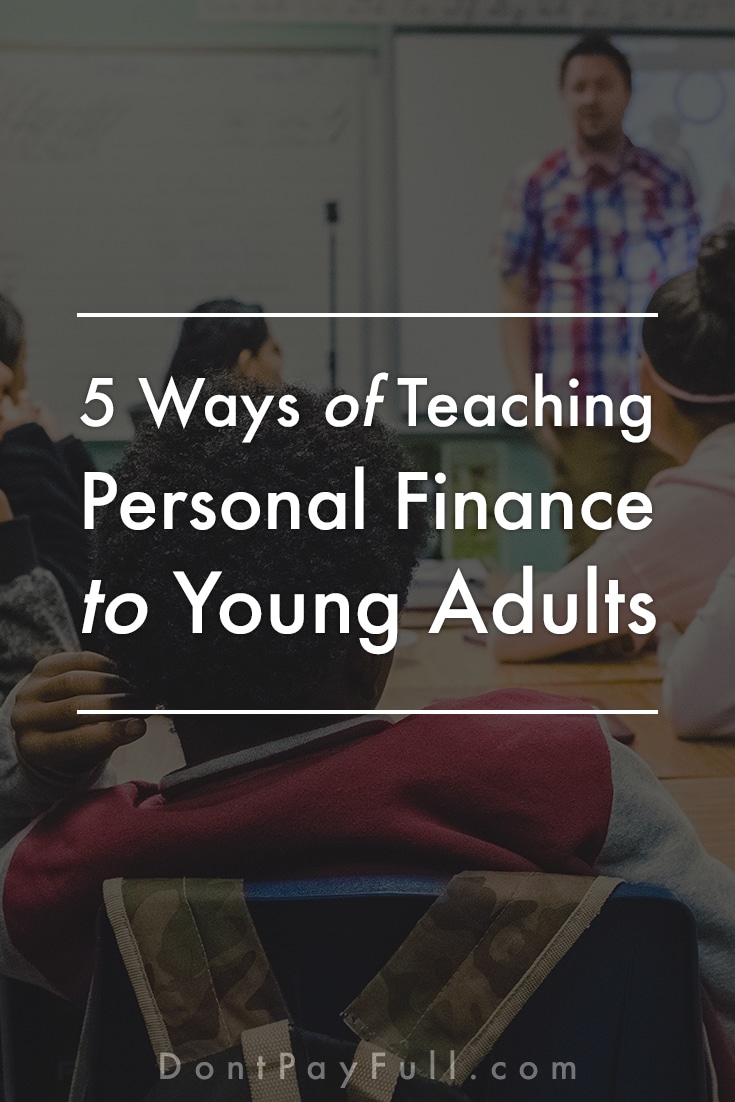Learning how to manage money is a skill that many people take years to grasp. Even many adults struggle to manage their finances. Here are several ways of teaching personal finance to young adults.
If you are one of the many who is struggling to maintain a savings account, don’t feel bad. You aren’t alone. According to MoneyGoody, 62% of Americans have less than $1,000 in their savings account.
In this guide...
1. Make Finance Classes a Requirement
According to Tony Robbins, financial education in schools can greatly impact how younger students grow up to handle their money, whether it’s making money, saving money or investing it.
American consumers owe over $918 billion in credit card debt and over $1 trillion in student loans, according to Tony Robbins. It’s important that we teach students early on how to handle their money so that these numbers don’t continue to grow.
States that have a requirement for a semester’s worth of personal finance courses have much more financially literate students. Mandating that students learn about savings, investing, credit, and online banking can help them establish healthy financial habits early on.
Meanwhile, states that don’t have required personal finance courses score low in financial literacy. Students in those states, such as California, Massachusetts, and Pennsylvania, tend to develop poor financial habits.
2. Talk to Your Kids and Teens About Finances
Many parents may be uncomfortable talking about money.
This means students will ultimately have to learn financial lessons through trial-and-error, which can deal a hefty blow, especially considering that the majority of young people have no baseline to attach their expectations to, according to Tony Robbins.
3. Teach the Differences Between Wants and Needs
Everyone understands that there is a difference between what you need and what you want, but have those definitions been refined?
For instance, a young adult knows that everyone needs clothes. However, do they understand that designer clothes are a want rather than a need? Likewise, everyone needs food but that doesn’t mean they need a fancy dessert.
It’s important to understand where the line is drawn so that they can make better purchasing decisions.
4. Every Purchase Comes with a Lost Opportunity
Consider this: a teen gets $100 for their birthday. Would it be better to spend it all in the week on whatever whims they had, or would it be better to wait and spend it on something they really want?
Money is unfortunately finite, and when you purchase something you lose the chance to buy something else. That’s why it is important to teach young adults that binge spending isn’t a good idea.
5. Delay Instant Gratification
Many people are used to getting an urge and then instantly buying what they need to satisfy it. However, this can lead to poor decision making, as soon as you can overspend on all your whims.
A good way to teach young adults to avoid this is when they have something fun they want to buy, have them add it to a list. Then, in a month, they can decide to buy one thing off the list.
Not only does this help them from binge spending, but it also helps them with impulse control.
Other Resources to Explore
If you are interested in more in-depth ways of teaching or learning personal finance skills, here are some resources to help you do so.
Free Educational Courses
The website Practical Money Skills offers free lesson plans on the college level to help young adults learn practical money skills. Along with a teacher’s guide, you can also find student activities to complete. The lessons you can find here are:
- Lesson 1: The Art of Budgeting
- Lesson 2: Living on your Own
- Lesson 3: Buying a Home
- Lesson 4: About Credit
- Lesson 5: Credit Cards
- Lesson 6: Cars and Loans
- Lesson 7: Consumer Awareness
- Lesson 8: Saving and Investing
- Lesson 9: In Trouble
- Lesson 10: About Consumer Privacy
They also have courses for grades 9 – 12, which are good if you are trying to teach a teen about taking care of their money. Along with a teacher’s guide, you can also find student activity books for each lesson. They have over 20 different lessons, including:
- Lesson 1: Money Matters: Why It Pays to Be Financially Responsible
- Lesson 2: Dream Big: Money and Goals
- Lesson 3: Road Rules: Researching and Buying a Car
- Lesson 4: The Cost of College: Financing Your Education
- Lesson 5: A Perfect Fit: Finding the Right Career for You
- Lesson 6: Keeping Score: Why Credit Matters
- Lesson 7: Privacy Please: Protecting Your Identity
- Lesson 8: Making it Work Together: Money and Roommates
- Lesson 9: A Plan for the Future: Making a Budget
- Lesson 10: Make It Happen: Saving for a Rainy Day
- Lesson 11: Savvy Spending: Sharpening Money Decisions
- Lesson 12: Bank or Bust: Selecting a Banking Partner
- Lesson 13: Nothing But Net: Understanding Your Take Home Pay
- Lesson 14: Using Credit Wisely
- Lesson 15: The Danger of Debt: Avoiding Financial Pitfalls
- Lesson 16: Home Sweet Home: Purchasing a Place
- Lesson 17: Smooth Sailing: Exploring Insurance and Estate Planning
Investopedia’s Teen Budgeting Guide
This is an incredibly helpful guide for teens to start their first budget. It teaches how to plan for expenses, cut spending, spend wisely, save money, and much more. They also provide lots of examples, some of which are visual, so the guide can appeal to different types of learning.
If you are older than a teen, don’t worry about being too old for this material. It’s quite friendly for all ages.
Final Thoughts
Hopefully, these tips have helped you come up with ways to teach young adults the valuable skills that go into personal finances. Are there any ideas or resources you have for teaching young adults about money? Let us and our readers know about them in the comments below.
Like this article? Pin it!




